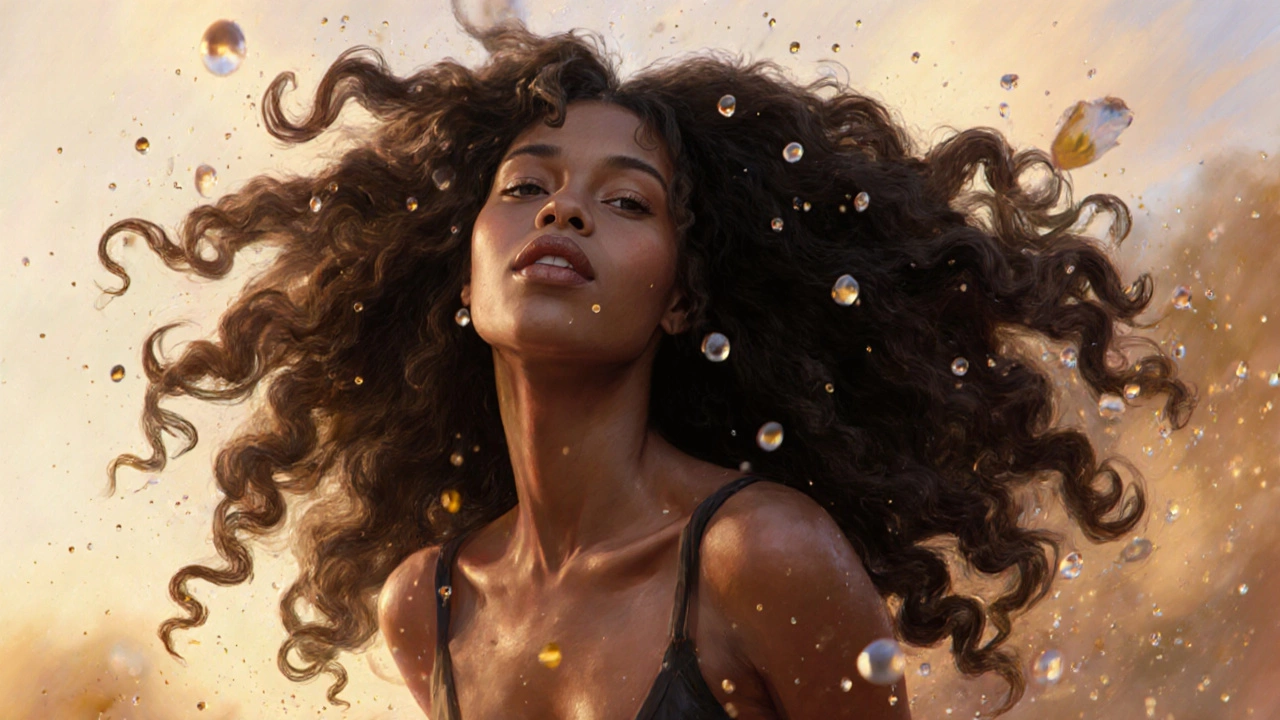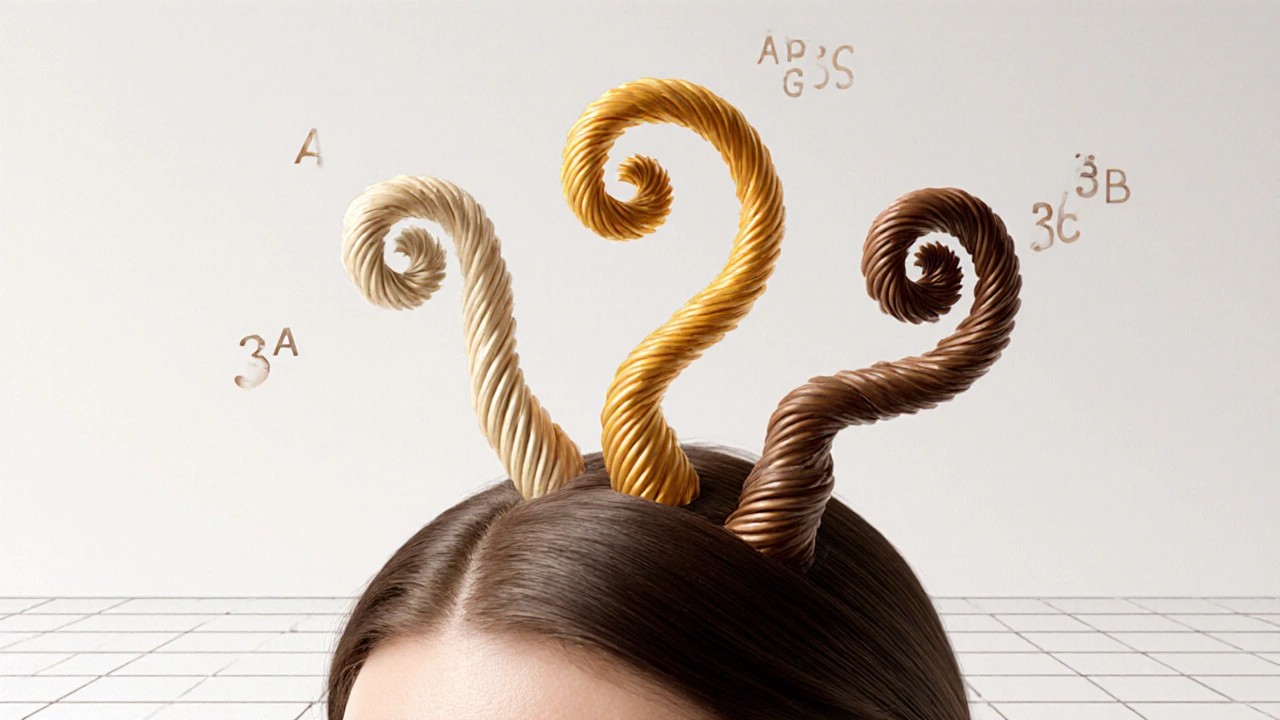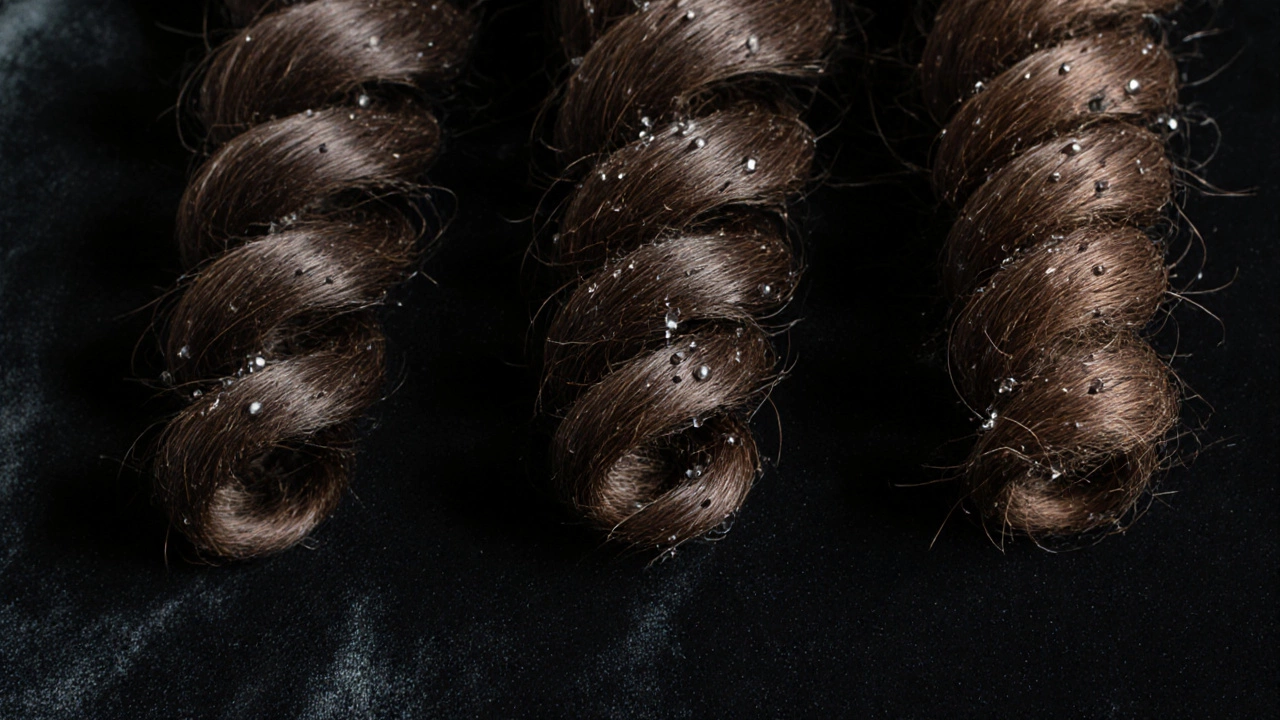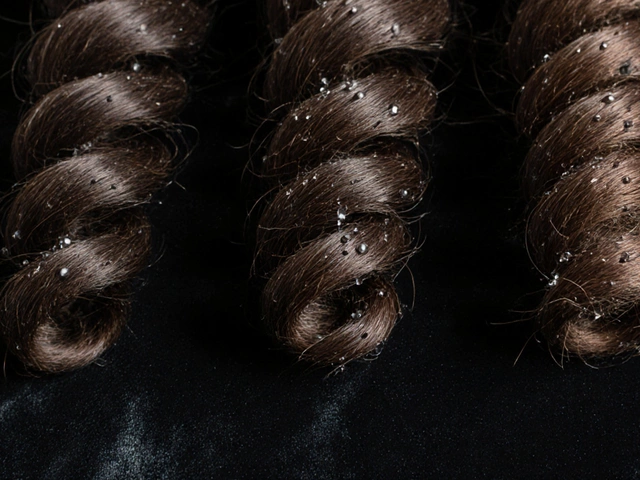If you’ve ever looked at a hair product label and seen "for Type 3 hair" and thought, "Wait, what does that even mean?" - you’re not alone. Type 3 hair isn’t a brand, a treatment, or a new shampoo formula. It’s a classification system used by curl experts to describe how your natural curls form. And if you’ve got curls, coils, or waves that don’t lie flat, this system was made for you.
What Exactly Is Type 3 Hair?
Type 3 hair is curly hair. Not wavy. Not coily. Not straight with a slight bend. Real, defined curls that spring up from the scalp. This category was popularized by stylist Andre Walker in the 1990s, and it’s still the most widely used system today - even though it’s not perfect. Type 3 curls are divided into three subtypes: 3A, 3B, and 3C. Each has its own texture, volume, and care needs.
Think of it like this: Type 3 hair is the middle child of curl patterns. It’s more defined than Type 2 waves, but looser and less tight than Type 4 coils. If your hair forms ringlets, corkscrews, or spiral patterns that bounce when you shake your head, you’re likely Type 3.
Breaking Down the Subtypes: 3A, 3B, 3C
Not all curls are the same. Even within Type 3, there’s big variation.
- 3A curls are loose, shiny, and look like big, springy spirals - think Hollywood curls. They’re the most defined and easiest to manage. These curls usually hold shape well, but they can get dry easily because natural oils struggle to travel down the length.
- 3B curls are tighter, more springy, and have a corkscrew shape. They’re thicker than 3A and often more voluminous. This is the most common Type 3 category. If your curls clump together when wet but frizz up when dry, you’re probably 3B. They need moisture-heavy products to stay defined.
- 3C curls are dense, tightly coiled ringlets that look like rope twists. They’re small, packed close together, and often appear more like a cloud than defined curls. 3C hair is prone to shrinkage - your hair might look 2 inches long when wet but spring up to 6 inches dry. It’s also the most prone to dryness and breakage because oils have the hardest time reaching the ends.
Most people fall somewhere in between these types. That’s normal. Your hair might be 3B with 3C patches at the nape of your neck. Or 3A at the crown and 3B at the ends. Hair texture changes across your scalp - it’s not one-size-fits-all.
Why Knowing Your Type Matters
Using the wrong products on Type 3 hair is like putting winter tires on a sports car. You might think you’re helping, but you’re just making things worse.
For example:
- If you use a heavy silicone-based conditioner on 3A curls, they’ll go flat and greasy.
- If you use a light, watery leave-in on 3C hair, it won’t hold moisture long enough - and you’ll be reapplying every few hours.
- Washing Type 3 hair every day strips natural oils and causes frizz. Most Type 3 folks wash once a week or every 10 days.
Knowing your subtype helps you pick the right products. Look for ingredients like shea butter, aloe vera, glycerin, and coconut oil. Avoid sulfates, alcohol, and heavy silicones unless you’re doing a deep cleanse or co-wash.

Common Mistakes People Make With Type 3 Hair
Even if you know you have Type 3 curls, you might still be making these mistakes:
- Drying with a regular towel. Cotton towels are rough. They cause friction and breakage. Swap it for a microfiber towel or an old cotton T-shirt. Gently scrunch out water - don’t rub.
- Brushing dry curls. That’s a one-way ticket to frizz city. Use a wide-tooth comb or your fingers only when hair is wet and coated in conditioner.
- Skipping protein. Type 3 hair, especially 3C, needs protein every 4-6 weeks to maintain strength. Look for hydrolyzed wheat or silk protein in conditioners.
- Using heat without protection. Even low heat from a blow dryer can damage curl structure. If you must use heat, always use a thermal protectant and keep the temperature under 300°F.
- Not sealing in moisture. Water hydrates, but oil seals. After applying a leave-in, follow up with a light oil like jojoba or grapeseed to lock it in.
How to Test Your Curl Type at Home
You don’t need a salon to figure this out. Here’s a simple method:
- Wash your hair with a sulfate-free shampoo and skip the conditioner for this test.
- Let it air dry naturally - no blow dryer, no products.
- Once completely dry, look closely at your curls. Are they loose spirals? Tight corkscrews? Tiny coils?
- Compare them to the descriptions above.
Pro tip: Do this after a few days without product buildup. If your hair is coated in gels or creams, it’ll distort the pattern.
Best Products for Each Type 3 Subtype
Here’s what works for real people with real Type 3 hair:
| Subtype | Shampoo | Conditioner | Leave-In | Styler |
|---|---|---|---|---|
| 3A | SheaMoisture Coconut & Hibiscus | Kinky-Curly Knot Today | Moroccanoil Curl Defining Cream | DevaCurl Light Defining Gel |
| 3B | Curlsmith Curl Clarifying Shampoo | Camille Rose Naturals Algae Renew | Bounce Curl Light Lotion | Uncle Funky’s Daughter Curly Magic |
| 3C | As I Am Coconut CoWash | Miss Jessie’s Pillow Soft Curls | Carol’s Daughter Hair Milk | Miss Jessie’s Curly Buttercreme |
These aren’t ads - these are products that consistently show up in curl communities from New Zealand to Nigeria. They’re affordable, accessible, and proven to work without weighing curls down.

What Type 3 Hair Looks Like in Real Life
Think about your favorite celebrity with curls - if they’ve got defined ringlets that bounce, they’re likely Type 3. Think of Solange Knowles, Zendaya in her natural state, or Lizzo’s signature curls. They don’t look frizzy or fuzzy. They look full, bouncy, and intentional. That’s what Type 3 hair can look like when it’s cared for right.
It’s not about perfection. It’s about health. Your curls don’t need to look like a magazine photo. They just need to feel strong, hydrated, and happy.
When Type 3 Hair Starts to Change
Hair doesn’t stay the same forever. Hormones, stress, diet, climate, and even hard water can shift your curl pattern. You might’ve been 3B in your 20s and now you’re 3C in your 30s. That’s normal.
If your curls suddenly become tighter, frizzier, or more brittle, it’s not a product failure - it’s your body changing. Adjust your routine. Add more protein. Reduce washing frequency. Try a humidifier if you live in a dry climate. Your hair is responding to your environment - listen to it.
Final Thought: It’s Not Just a Number
Type 3 hair isn’t a label to box you in. It’s a starting point. It tells you what your hair needs - not what it should look like. You can have Type 3 hair and still love a sleek ponytail. You can have 3C curls and still straighten them once a month. There’s no rulebook.
What matters is that you understand your hair’s natural behavior. Once you do, you stop fighting it. You start working with it. And that’s when the magic happens - when your curls don’t just look good, but feel good too.
Is Type 3 hair the same as curly hair?
Yes, Type 3 hair is a specific category of curly hair. It includes defined spirals and ringlets, but not waves (Type 2) or tight coils (Type 4). So all Type 3 hair is curly, but not all curly hair is Type 3.
Can Type 3 hair be straightened?
Yes, you can straighten Type 3 hair, but it’s not recommended often. Heat damages the curl structure over time, leading to loss of definition and increased breakage. If you do straighten, always use a heat protectant and keep the temperature under 300°F. Try air-drying or using a diffuser instead to preserve your natural pattern.
Why does my Type 3 hair shrink so much?
Shrinkage happens because Type 3 curls coil tightly as they dry. 3C hair can shrink up to 70% of its actual length. This is normal - it’s not a sign of damage. To reduce shrinkage, try stretching techniques like banding, twist-outs, or braid-outs when hair is damp. You’ll still get volume, just with more length.
How often should I wash Type 3 hair?
Most Type 3 hair types do best with washing every 7-10 days. Washing too often strips natural oils, leading to dryness and frizz. Use a sulfate-free shampoo or co-wash (conditioner-only cleanse) to keep curls hydrated. If your scalp gets oily, try dry shampoo on the roots instead of full washes.
Do I need protein treatments for Type 3 hair?
Yes, especially if you have 3B or 3C hair. These curl types are more prone to breakage because the curl pattern creates stress points. A protein treatment every 4-6 weeks helps strengthen strands. Look for hydrolyzed proteins like keratin, silk, or wheat in your deep conditioners. Too much protein can make hair brittle, so balance it with moisture.

